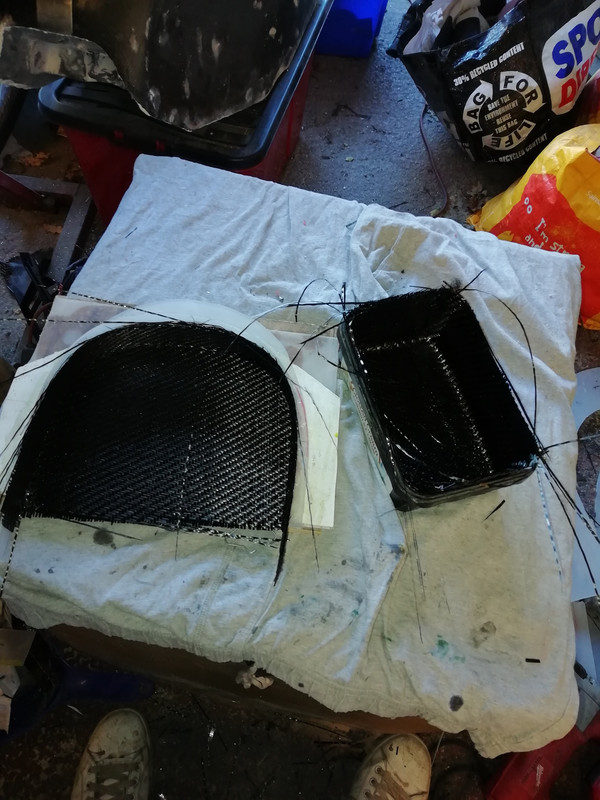Today I finished the RH seat latch fork which took most of the morning, bending 10mm nylon is not that easy, particularly when you make the first bend the wrong way - DOH!!! Also getting it to clear the rear suspension rocker took quite a bit of buggering about. It seems to be correctly positioned now and robust enough for the intended purpose.
Whilst messing about with the seat, taking it on and off about 100 times I became disillusioned with the 4 x saddle clip arrangement as the central locating method.
Soon after I got the Monster I was knocked off it by a bloke U turning without indicating as I filtered down the outside of a column of traffic. He did a runner and I needed a new tank but the old one, severely dented, is in my garage loft.
The old front tank mountings will be just the job for my central seat location method. The hole pitch did not match the holes I drilled for the saddle clips but they are sufficiently different to allow me to re-drill and tap the second hole without interfering with the existing drilling. This is a much more satisfactory solution with the only downside being the weight of the tank mountings themselves.
With the front mounting sorted I turned my attention to the rear latch and how to attach it to the seat. I was cognisant it has to be accurate to a couple of mm in 3 dimensions or it just will not work (or worse it will engage but not disengage). My original plan had been to shape some “oasis” foam from the top of the hump and encase it in CF to form a sort of buttress that the latch plate could be bonded to. The more I thought about it though the more I realised that the chance of me getting the latch plate within a couple of mm in any direction was disturbingly small.
After about 3 cups of tea and about 5 “oily rags” I came up with the following:
a) bonding in the diaphragm to the seat hump base
b) cutting a rectangle of CF about 20 mm larger than the latch base and attaching it to the latch base
c) cutting down a Chinese take away container to act as mould and inserting that underneath the CF rectangle – effectively forming a recess in the seat hump diaphragm
d) ascertain the position of the recess and cutting a hole a mm or so smaller in each dimension. The takeaway box is sufficiently flexible to conform to the smaller hole and this will hopefully seal the hole when f) below is undertaken
e) fitting the latch to the locking mechanism so it must be in absolutely the right place
f) pushing the seat, the diaphragm and the hole within it over the latch mechanism then laminate CF around the outside of the takeaway container and joining to the rectangular CF plate. The diaphragm is roughly parallel with the two rear frame rails rising rearward at about 60 degrees, the latch mechanism is approximately parallel with the ground so the recess will end up being wedge shaped.
With all the thinking time spent I did not get time to actually do it but a start was made.
I also went round the tank seam with another application of JB weld which I think now has about an even chance of being petrol tight, although there will need to be some time spent tidying up the surplus.
ETTC is now down to 163 hours

 free image uploader
free image uploader
























 Linear Mode
Linear Mode

